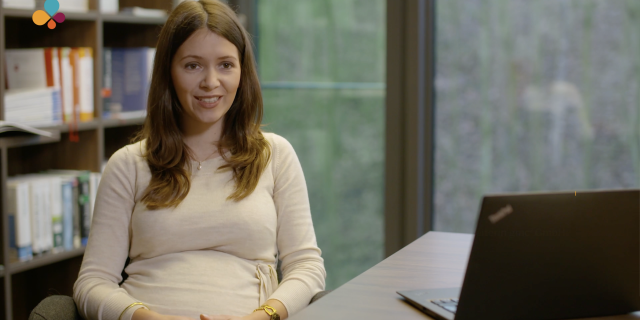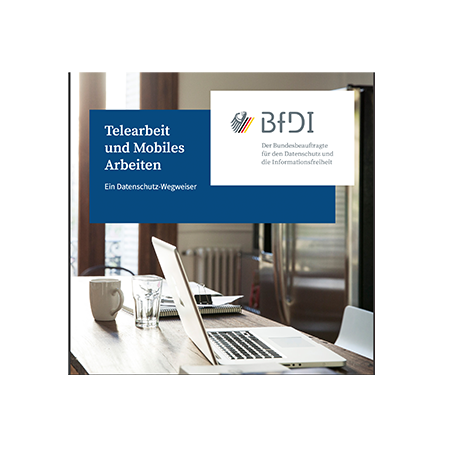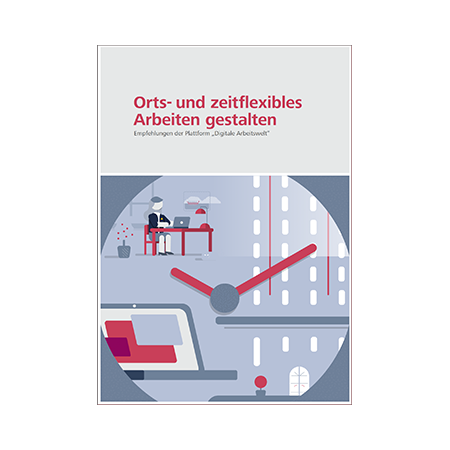Home office and mobile working
What should your employees bear in mind when working from home and working remotely?
The term "home office" is on everyone's lips - but it often refers to mobile working, which is practiced by many companies, also to enable a better work-life balance. We have compiled a brief overview of the differences between the two and the regulations to be observed with regard to working hours, accident prevention and data protection.

Home office (also known as "teleworking") and mobile working - many companies are confused about what exactly is meant by these terms and what legal regulations apply. In the case of permanent home office, your employees work at a fixed workplace outside the company, for example in their own home. The Workplace Ordinance applies here: the home office or teleworking workplace must meet the same legal requirements in terms of occupational health and safety standards as the company workplace. That's why the equipment, from the office chair to the monitor, is at the company's expense.
Mobile working is the definition of what many companies practice. With mobile working, you provide your employees with a laptop, tablet and possibly a smartphone so that work can be carried out from different locations, i.e. when traveling, on the train, in a hotel or even at home at the kitchen table. It is not the location that is important, but the accessibility. This is why the Workplace Ordinance does not apply here, as you cannot, of course, assess the safety of the kitchen or café chair.
Working hours - regulated and flexible
You can also determine the availability times of your employees when working from home. Many companies agree to trust-based working hours so that employees can work as they wish, taking into account operational requirements and weekly working hours. You are responsible for complying with the protective provisions of the Working Hours Act:
- Your employees may not work for more than six hours at a time without a break.
- On average, they may not work more than eight hours per day, or ten hours in exceptional cases.
- And a rest period of eleven hours applies at the end of the working day.
This is not always possible, especially with mobile working: Another email or two in the evening or creating a presentation in the early hours of the morning are part of everyday life for many mobile workers. There is a danger of blurring the boundaries between work and leisure time.
As an employer, however, you must monitor rest and working hours as part of your duty of care. Following the latest landmark ruling by the Federal Labor Court (BAG) on 13 September 2022, the Federal Ministry of Labor has presented a reform of the Working Hours Act. To protect the health and safety of employees, the law stipulates that the start, end and duration of working hours must be recorded electronically on the same day.
Accident protection - limited in individual cases
Statutory accident insurance only applies to work-related activities when working from home. An example: If a team member falls down the stairs and breaks their arm because they had to check the internet connection in the basement, this accident would be insured. However, if he falls down the stairs because he wants to make himself a coffee, this accident would not be insured. This means that when working at home, employees bear many risks themselves. While going to the kitchenette or canteen at work is covered by accident insurance, going to the kitchen or toilet at home is, according to the Federal Social Court, a "personal economic activity" and therefore not insured.
Even if employees injure themselves while hanging up laundry during their lunch break or preparing a meal, they must turn to private health insurance, as the accident risk arising from the home environment is attributed to the insured person.
Accidents that happen on the way are insured - provided that the activity that led to the accident is objectively related to work. According to a ruling by the Federal Social Court in December 2021, the journey to work within your own four walls is also insured. Accidents that occur on this route are therefore considered accidents at work. The prerequisite is that the employee can credibly assure that they were walking to their desk and not to breakfast, for example. As the circumstances of accidents at work can vary greatly, they are usually decided on a case-by-case basis.
Data protection - but secure!
Important: The responsibility for data protection lies with the company itself. Software and hardware should be provided entirely by the employer, used only for work-related matters and, of course, only by the employee. A secure LAN connection is always preferable to an open WLAN. A VPN connection is required for data transfer, and employees should not use USB sticks or local hard disks for data storage, but instead store the data on the company server. If storing data on insecure media cannot be avoided, it should at least be encrypted.
When working on the move, data protection may be more difficult to guarantee, because when working on the train or in a café, for example, the screen may be visible to strangers or telephone conversations may be overheard.
Good company examples from practice
Where can we find help and advice?
Healthy and humane work stands and falls with the actual work design on site. This is why the Federal Institute for Occupational Safety and Health (BAuA) conducts research on a wide range of topics relating to the design of work. All information, research programs and publications can be found on the portal www.baua.de.







